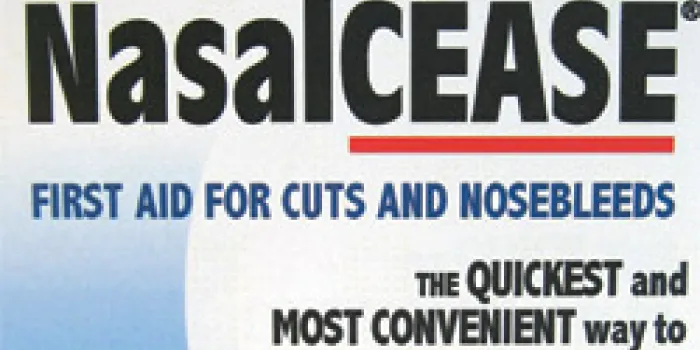The same material that helps stop nasty nosebleeds also curtails cuts. In June 2011, NasalCEASE®, an over-the-counter product manufactured by Catalina Healthcare, was approved by the US Food and Drug Administration (FDA) for its expanded use as a topical dressing for minor cuts and abrasions.
The product is being marketed as a first-aid remedy for the general public and also for those with certain bleeding disorders, such as mild hemophilia and von Willebrand disease, type I.
Algae’s Absorption
NasalCEASE is composed of interwoven threads or particles of calcium alginate, a cell membrane component of brown algae, a type of seaweed. The advantage of using alginates in wound dressings is that they are insoluble in water and can absorb up to 20 times their weight. That fluid absorption helps minimize wound secretions and bacterial contamination. When a NasalCEASE bandage comes in contact with the blood in a wound, it releases calcium, initiating the clotting process and absorbing blood.
According to package directions, NasalCEASE can stop the bleeding within one minute when pressure is applied. It can also be left on and removed later.
From Nosebleeds to Nicks
For people with a mild bleeding disorder, NasalCEASE is an effective, convenient option for minor wounds. “I’ve used similar products with children at camp,” says John Reed, PharmD, founder of Cyril Home Care Pharmacy in Cyril, Oklahoma. “These things are fantastic for nasal bleeds and for minor bleeds, such as small cuts, like a shaving nick or a scrape on the knee or arm.”
The dressing actually helps with the clot-forming process. “It gives the platelets a place to adhere to and form a real clot,” Reed says. He recommends covering the NasalCEASE bandage with Coban™, a self-adherent wrap that holds the dressing in place. Once the clot is established and the bleeding has stopped, the dressing can be removed without reopening the wound. “It’s something that everybody, especially people with mild bleeding disorders, should probably have in their first-aid kit,” he says.
But the product is not for everyone in the bleeding disorders community. “For large wounds, especially in individuals with severe bleeding disorders, there is the danger that this product would seal off the top layer of skin and thus prevent external bleeding,” says Marion Koerper, MD, National Hemophilia Foundation medical advisor. Bleeding in deeper tissue layers could then lead to a pooling of blood, which could rupture through the NasalCEASE or the skin, she says. People with severe bleeding disorders who have a deep wound should avoid such products. “A dose of factor would still need to be administered at the time of the injury,” Koerper says.
NasalCEASE is packaged in boxes of five sterile bandages, measuring 2 × 4 cm (approximately 1" × 1¾"). It can be kept in a first-aid kit, backpack or purse. Be sure to consult with your physician before using this product.

